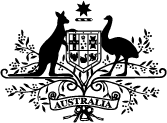The Morrison Government is investing more than $10 million in medical research to identify new and innovative approaches to help increase participation in Australia’s breast, bowel and cervical cancer screening programs.
Australia is a world leader in cancer screening through BreastScreen Australia, the National Bowel Cancer Screening Program and the National Cervical Screening Program but there is always more that we can do to increase the number of Australians participating.
The $10 million will be shared across eight research projects, who will use the funding to identify current initiatives that will further engage and encourage all Australians to participate in cancer screening programs.
Minister for Health and Aged Care, Greg Hunt, said regular screenings and early detection can lead to better outcomes for cancer treatments.
“Australia’s cancer screening programs are world-leading and it’s simple: we know cancer screening saves lives,” Minister Hunt said.
“This research is critical because the more we can do to understand the challenges preventing Australians from getting regular screenings, the more we can do to innovate the programs, maximise protection and save more lives.”
Bowel cancer
Bowel cancer is the third most common cancer in both men and women in Australia and is more common in people over the age of 50.
The National Bowel Cancer Screening Program has been rolled out nationally and has the potential to save 84,000 lives by 2040 if participation levels hit 60 per cent. Currently participation in the program remains below 45 per cent.
The University of Melbourne will receive $1.5 million for their project, which will trial SMS messaging of patients in general practice to reach those who have not responded to existing bowel cancer screening information.
Participation in the Bowel Cancer Screening Program are lower amongst Aboriginal and Torres Strait Islander people. The Australian National University will receive $1.7 million to understand why rates are lower than non-Indigenous Australians and how we can increase participation rates.
Cervical cancer
The Australian Government has pledged to be the first nation in the world to achieve the World Health Organization’s global commitment to eliminate cervical cancer.
Since the introduction of the National Cervical Cancer Program in 1991 and the Human Papilloma Virus (HPV) vaccine program in 2007, the risk of cervical cancer has significantly decreased in Australia.
The University of Melbourne will receive $1.4 million to look at the use of self-collection to increase access and equity to cervical cancer screening and support decision making for women about their health.
Development of resources and tools to support uptake of screening in people with intellectual disability is also a focus, with Family Planning NSW to receive $1.4 million to undertake research.
Breast Cancer
Breast cancer is of the most common cancers in women in Australia and the second most common cancer to cause death in women, after lung cancer.
To help improve breast screening participation, the University of Western Australia will receive $800,000 to target obesity related barriers to mammographic screening.
Research will also examine ways to engage Aboriginal and Torres Strait Islander women, women from diverse cultural and language backgrounds and women with different levels of educational attainment and income.
The successful applications were selected through a rigorous and transparent peer review process and funding is provided through a National Health and Medical Research Council Targeted Call for Research into Participation in Cancer Screening Programs 2021.
|
